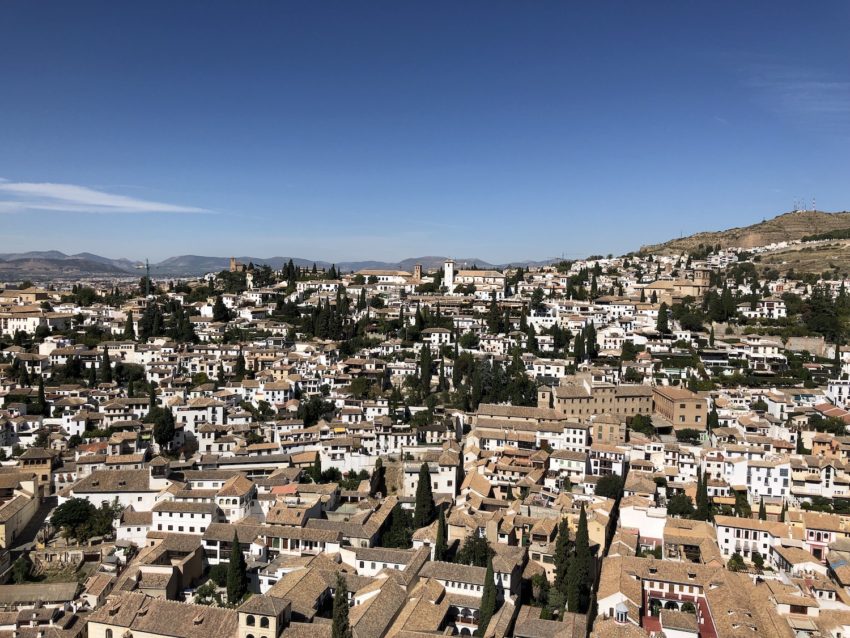The Emirate of Granada was the last bastion of the Arabs who ruled much of the Iberian Peninsula from the 8th century until 1492. In January that year the sultan surrendered to the Christian forces and the Alhambra fell.
It may have been the end of the Moorish rulers but much of what they built, that their artists created and their authors scribed remains to this day, not least the fortress, gardens and palaces of the Alhambra. But Granada, and countless other towns and cities across Spain, are peppered with examples of Moorish architecture and craftsmanship, just not on the same scale as the city’s top tourist attraction.
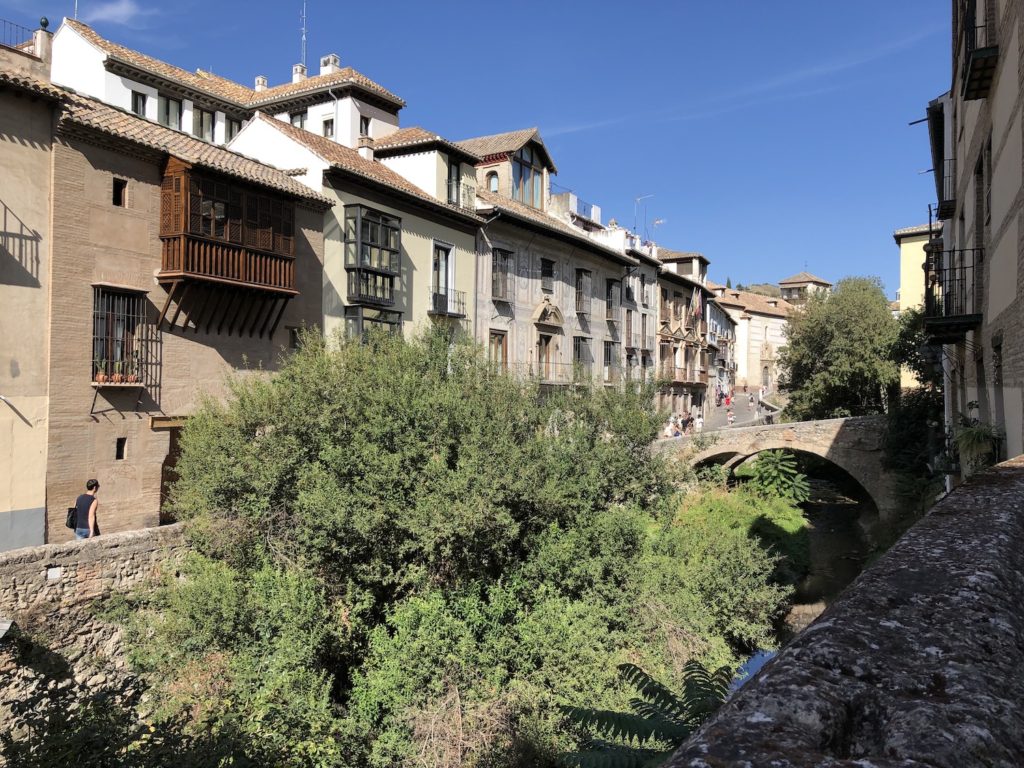
Granada was the second stop on our Andalusian tour and I drove us there from Cordoba on the virtually empty N-432, through a landscape baked dry by the fierce Mediterranean sun. Olive groves stretched to the horizon, the monotony broken only by white-washed villages clustered around the hills. Alcaudete is an example of just such a village, where we stopped in the hopes of visiting the Castillo de Alcaudete, but it was closed for the afternoon so we made do with a quick drink in a local bar. Closer to Granada the treeless Sierra Nevada mountains reared up ahead of us, free of the snow that blankets ski runs in winter.
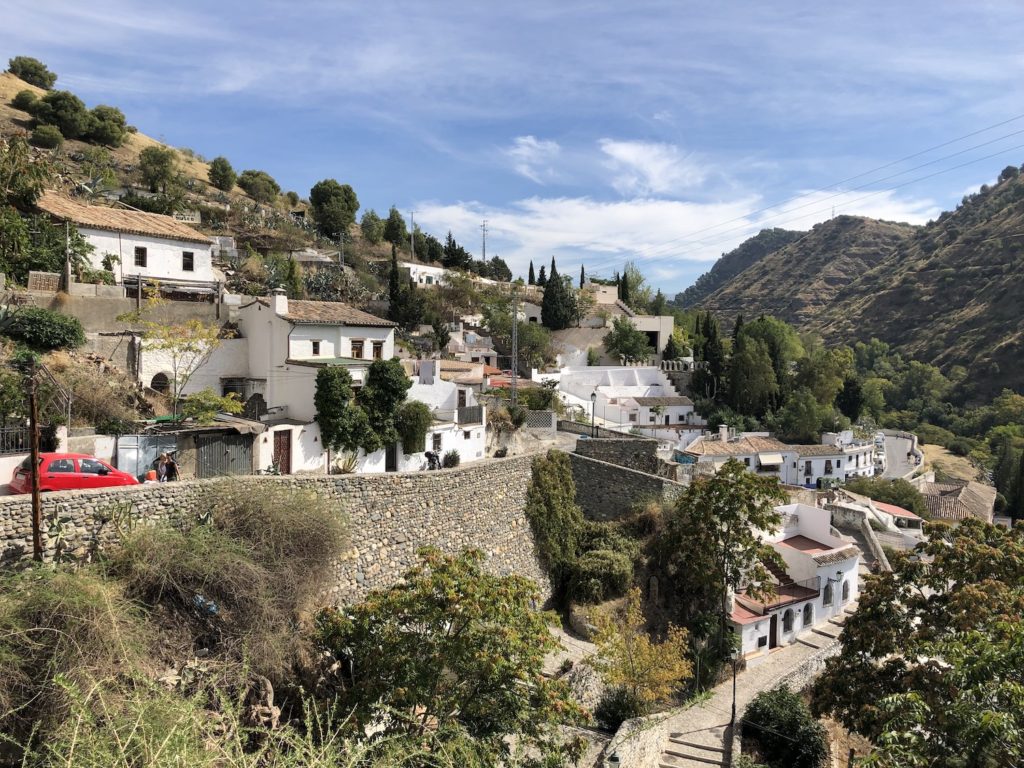
The Alhambra may dominate Granada but there’s more to the city than this Moorish fortress and palace, as we discovered over a couple of days while based at the Palacio de Santa Ines. The hotel occupies a characterful and beautifully restored palace close to the Darro river and the historic, cobbled Carrera del Darro. On one side of the river rise the hills of the Alhambra, on the other the Arabic district of Albaicín. The latter is an atmospheric collection of steep alleys, cobbled winding streets barely wide enough for a motorbike, a collection of ancient churches and a fair number of bars and restaurants. Indeed, on our first evening we dined in the peaceful garden of the Restaurante El Trillo shortly after witnessing a spectacular sunset over the Alhambra from the Albaicin’s best viewpoint at Plaza de San Nicolas.
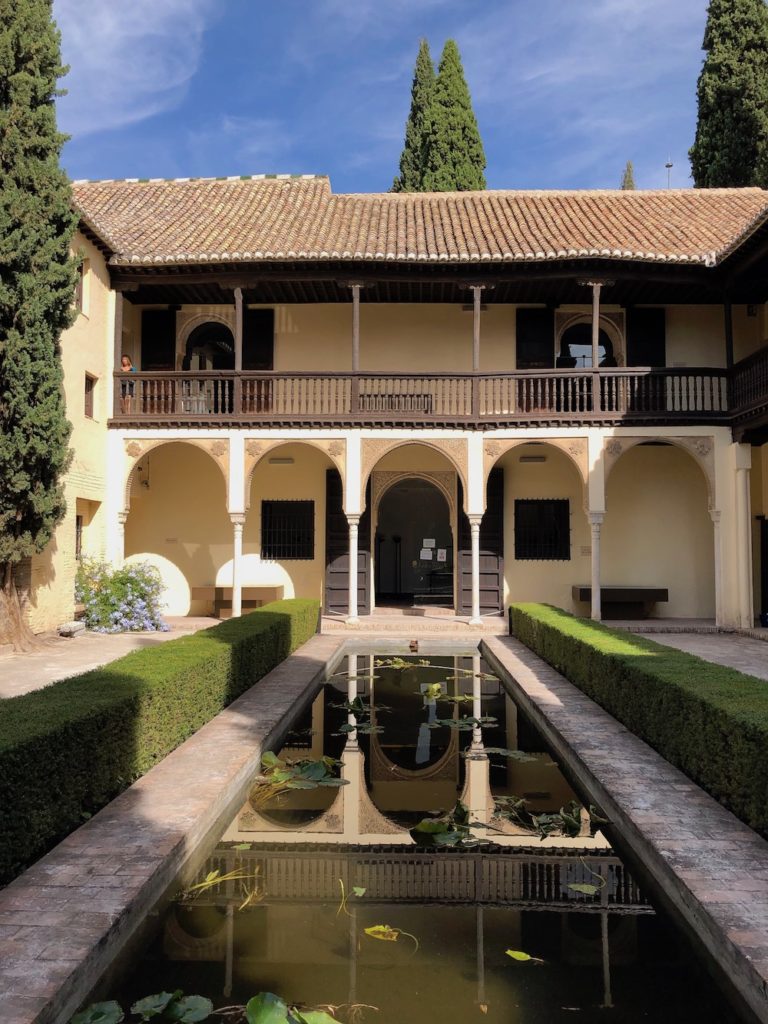
On a hot day, exploring the Albaicín is hard work but worth every minute in order to capture its picturesque spots and those amazing views of the rest of the city. We discovered modest cottages and grander homes on streets mostly free of the hordes of people and tour groups found clogging the pavements at the Alhambra and cathedral. We paid a few euros to visit the Casa del Chapiz, an old Arabic family home that’s been restored and turned into a study centre. So while we couldn’t go inside we were able to tour the modest, well-manicured gardens. Beyond lies the district of Sacromonte, traditionally home to a gypsy community and famous for homes that were built into caves and the hillside. The neighbourhood museum looked tempting but the walk was too far uphill in the heat.
Close to the river are a couple of other historic properties, again modest but worth a quick visit. El Banuelo is the old Arab baths, composed of three rooms but very much shells. A few streets away is the Casa Horno de Oro, built around a central courtyard and with some beautiful Islamic arches. The district is also home to the city’s Archaeological Museum, in a lovely building with an expansive central courtyard and a stunning 16th century facade. There’s not a huge amount to see, which isn’t necessarily a bad thing, but it helped to paint a picture of the region’s history.
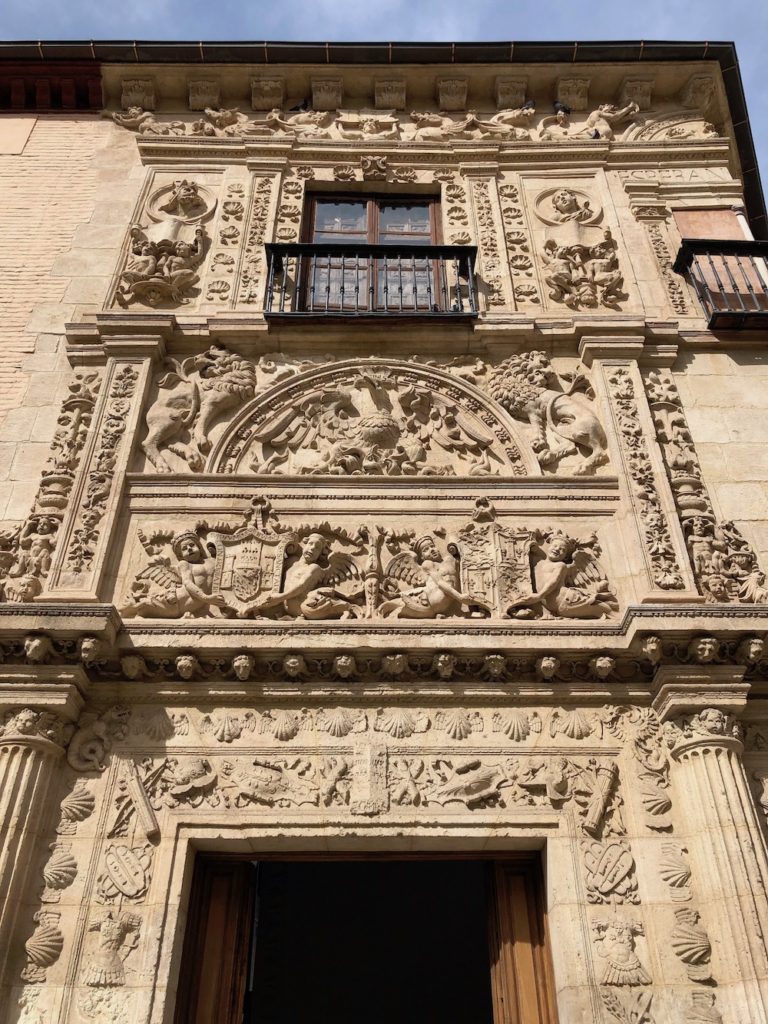
The work of Moorish craftsmen and women is much in evidence a mile or so down the road at the Palacio de la Madraza. This is one of a number of imposing, historic properties clustered around the bulky cathedral and royal chapel in a more recognisably Spanish part of the city notable for its mansion blocks, wide avenues and plazas. The Palacio, which has a trompe l’oeil facade, was once a muslim school but was remodelled to become Granada’s town hall at the time of the Christian reconquest. Remarkably one room from Moorish times remains, the mihrab niche, and it features the most extraordinary Islamic-style decoration and carving. Elsewhere there’s an impressive baroque dome and a council room with an equally impressive wooden, decorated ceiling. We went on a short tour of the building, which is now part of Granada University.
Some of the neighbouring streets were once part of Granada’s grand bazaar, the Alcaiceria. While they’re atmospheric enough, they’re much rebuilt and today they’re mostly given over to tourist tat. It’s nigh-on impossible to walk down market’s narrow alleys without being crushed by tourists looking for a fridge magnet.
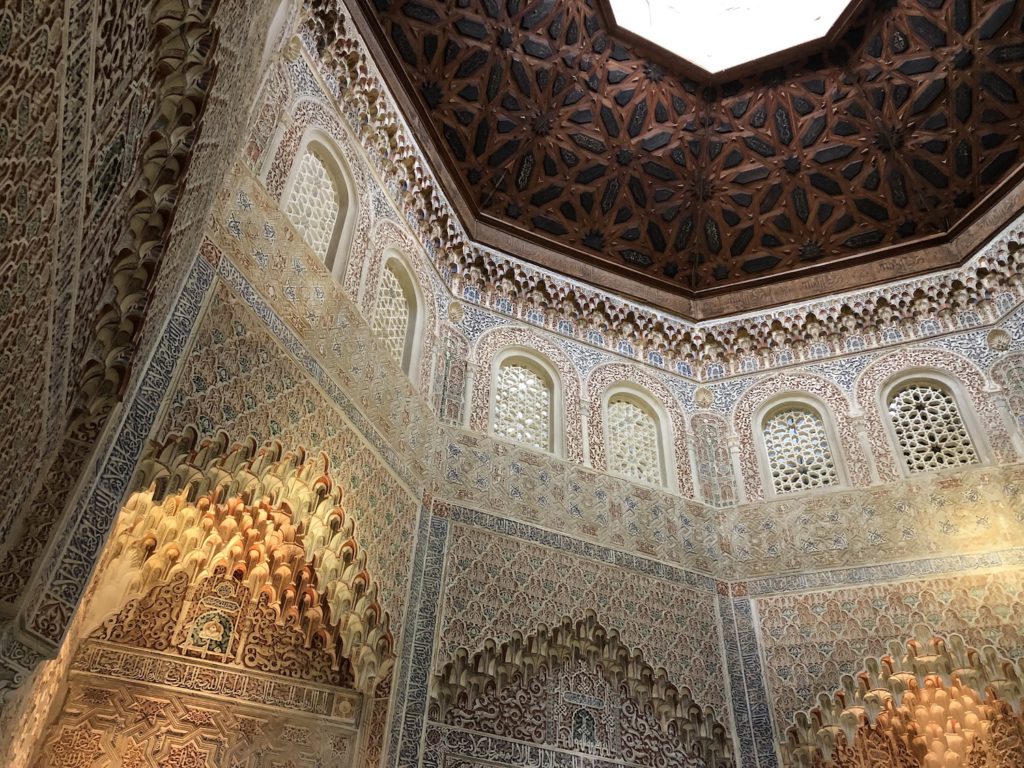
Of an evening Granada is a mixed bag. Some of the roads around the cathedral are full of tacky, touristy bars and restaurants that I wouldn’t frequent if they were the last places in Spain. Yet elsewhere in the centre are plenty of friendly, quality spots where staff don’t have to beg people to take a table. Perhaps the best for us was La Vinoteca, a real highlight and popular with locals. We enjoyed a few glasses of wine and some excellent tapas in the cool of the early evening after exploring the Alhambra.
Afterwards we wandered around, eyeing up bars, escaping the promenading crowds and admiring the architecture of what is a handsome Spanish city. But after three nights it was time to move on to Malaga…

